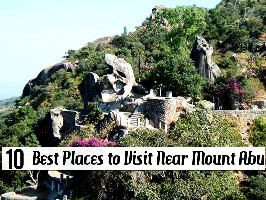

Chenab Bridge one of the most precious project of Indian railways at this point in time. This is one of the tallest and longest rail bridges in the world having a height of 1,315 meters and is being built at the height of 359 meters. It is located between Bakkal and Kauri in the district of Jammu and Kashmir J&K, India. The construction of this bridge is still under process and is expected to be completed by March 2019 had a lifespan of more than 120 years. It will be a great contribution towards the economy of the state and provide better transportation facilities.
The INR5.12bn $92m bridge is a part of Jammu-Udhampur-Srinagar-Baramulla Rail Line JUSBRL project being undertaken by the Ministry of Indian Railways. The bridge will include a 14m-wide dual carriageway and a 1.2m-wide central verge.
1. Requirement of Chenab Rail Bridge

Travelling around the mountains of Jammu and Kashmir has always been a tedious task for locals as well as tourists. Hence the need of providing the transport facility has been recognized and construction of national railway project connecting J&K with the rest of India was proposed.
This project included the construction of several bridges and tunnels along the route; Chenab Bridge is one of them. It will be spread across the Chenab River and provide access to the Kashmir valley from Udhampur.
2. Chenab Bridge design

Chenab Bridge is a very unique and first bridge in India forming a massive steel arch. This design has been undertaken on the basis of the experiences from similar projects worldwide.
The deep Chenab river valley under the bridge is prone to high wind pressure risking the stability of the bridge. However, this is being designed to resist wind speeds of up to 260kmph. The seismic nature of the project zone was also considered during its design.
This unique bridge is made up of Steel as it will be comparatively economical and will resist temperature to -20C. As safety hazards from the terrorist attacks, this bridge will be made of 63mm thick special blast-proof steel along with the concrete pillars that are being designed to withstand explosions.
3. Challenges faced during construction

It is pretty difficult to build a bridge in the most complicated and isolated location. One of the biggest challenges in the construction of this bridge was building the bridge without obstructing the flow of the river.
The deck of the bridge is being built partly in the straight horizon and partly in curves. It is located on a transition curve with changing the radius. Construction is being carried out in stages following the gradual change in the alignment. This is the first time a bridge is being constructed incrementally on a transition curve.
Once the bridge is complete, the rail journey from Jammu to Srinagar will take about 5 hours which currently takes about 11 hours by road. This is a dream come true for both Kashmir locals and travelers who are willing to explore the majestic valley. This will also give a boost to the tourist industry, as this bridge is unique enough to be considered as a tourist spot in itself.
Book your Kashmir tour packages at best price with HelloTravel.com & get exciting deals on Kashmir vacation.
Recommended For You
-
 Unlocking the Valentine Day Dress Code and Colors Meaning
Unlocking the Valentine Day Dress Code and Colors Meaning
-
 All you need to know about the Inauguration of Ram Mandir
All you need to know about the Inauguration of Ram Mandir
-
 Ayodhya beyond Ram Mandir: Hidden Gems and Nearby Attractions
Ayodhya beyond Ram Mandir: Hidden Gems and Nearby Attractions
-
 Ram Janmabhoomi Dispute: Eternal Long Legal Dispute
Ram Janmabhoomi Dispute: Eternal Long Legal Dispute
-
 The History of Ayodhya Ram Mandir
The History of Ayodhya Ram Mandir
-
 Exploring Ayodhya Ram Mandir Architecture
Exploring Ayodhya Ram Mandir Architecture



























Author Bio